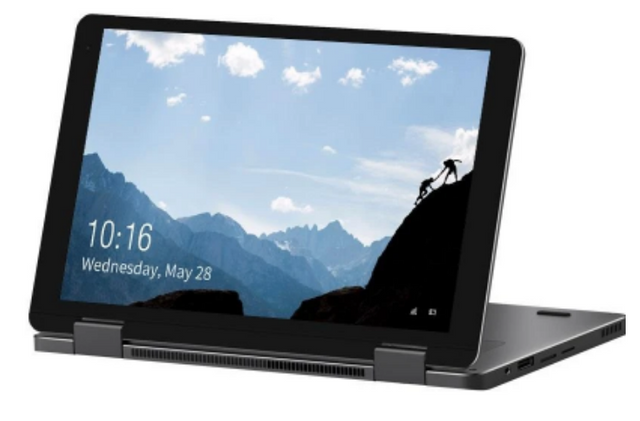
Introduction
The Chuwi MiniBook is surprisingly a well-balanced and multipurpose netbook with its respectable system performance, bright 1080p touchscreen, and selection of ports. The different keyboard layout and twitchy mouse button will take some getting used to. The Chuwi MiniBook is the Chinese OEM’s newest IndieGogo project for operators who want something even smaller and lighter than the typical 11-inch or 13-inch Ultrabook form factors. The UMPC infamous for its Lenovo Yoga-inspired 360-degree hinges, 16:10 1200p touchscreen, aluminum chassis, and expandable storage in a compact 8-inch form factor.
Get More Info:https://www.banggood.com/custlink/vvvPYRp7dF
Display
The Chuwi MiniBook uses the same AU Optronics AUO17D8 controller and likely the corresponding panel as on the challenging 8-inch Topjoy Falcon. In a surprising twist, though, the difference is measurably higher on the MiniBook, and the display is much brighter than the Falcon to be about as bright as the iPad Air 2019. The deep black levels, crisp glossy overlay, dense PPI, and deep colors all contribute to an impressive visual experience relative to the price. Color space is wide for its price range at about 90 percent of sRGB to be greater than most budget IPS panels, where 60 percent sRGB is common. In other words, colors can be almost as deep and as accurate as flagship Ultrabooks costing over twice as much.
Processor
CPU performance is about 35 percent and 77 percent faster than the Microsoft Surface Go and LapBook Plus, respectively, in multi-threaded performance. Nevertheless, still slow in general, even the least performance advantages are appreciated because system responsiveness can be an issue for these low-power PCs. Running CineBench Multi-Thread in a loop shows no throttling issues over a long time.
Connectivity
The six ports are evenly distributed along the left and right edges. Note that the system integrates mini-HDMI and a MicroSD reader instead of the more required full-size HDMI and full-size SD reader.
There are a couple of annoyances worth stating. Firstly, the right USB Type-A port is upside-down while the left USB Type-A port is right-side up. Secondly, the lone USB Type-C port is used for charging and data, meaning that you will not be able to recharge the system and plug in a USB Type-C accessory concurrently.
System Performance
PCMark results are low as predictable from a Celeron system. However, the numbers are consistently higher than the average Celeron N4100 in our database by 5 to 20 percent meaning that the MiniBook is slightly faster than other systems equipped with the same CPU. The Chuwi LapBook Plus powered by the Atom x7-E3950 is significantly slower on all accounts.
Storage Devices
The MiniBook uses a soldered 128 GB eMMC 5.1 primary drive and a secondary M.2 2242 SATA enlargement slot. Meanwhile, the Core m3 SKU promises M.2 NVMe SSD support. Sequential read and write rates are average at only 221 MB/s and 125 MB/s compared to ~500 MB/s on most SATA III SSDs. Still, adding a secondary drive is more than what we can say for most Ultrabooks and netbooks.
Battery Life
Runtimes are pretty good considering the small 26 Wh battery and questionable power consumption behaviour noted above. Expect about 6.5 hours of real-world WLAN use when setting a display brightness of 150 nits (or 30 percent).
Recharging from empty to full capacity with the included USB Type-C adapter is slow at 2.5 hours. Other full-size Ultrabooks can fully recharge in about 1.5 hours.
Communication
The 1×1 Intel 3165 is restricted to a maximum of 433 Mbps compared to 1.73 Gbps on the costlier 2×2 Intel 8260. Nevertheless, performance is reliable and more than sufficient for the MiniBook. Bluetooth 4.2 is integrated with no WAN features.
Maintenance
The bottom panel comes off easily after removing the seven Philips screws. While RAM and WLAN are fused, users can still easily add a secondary SSD or service the battery.
Get More Info:https://www.banggood.com/custlink/vvvPYRp7dF